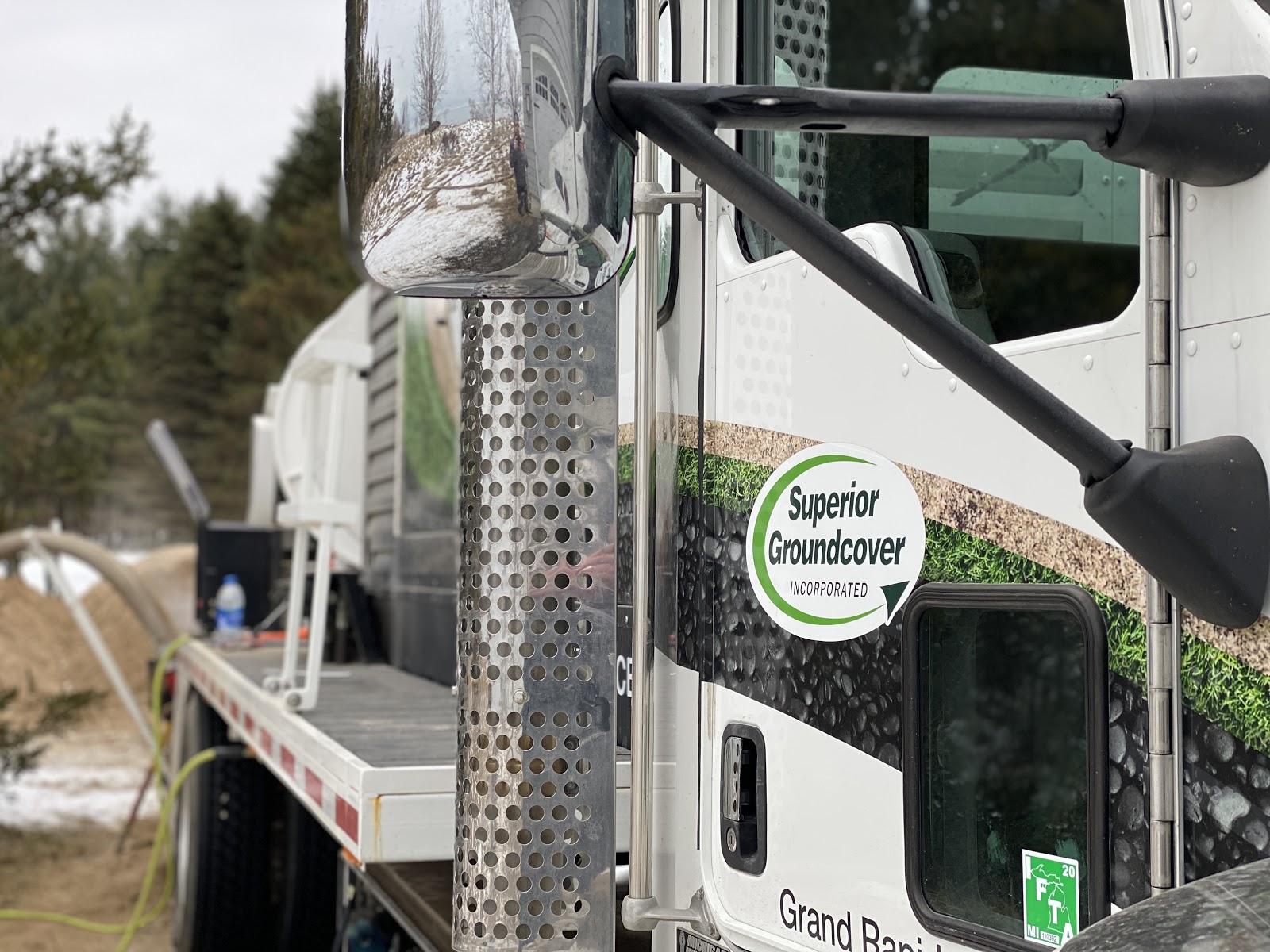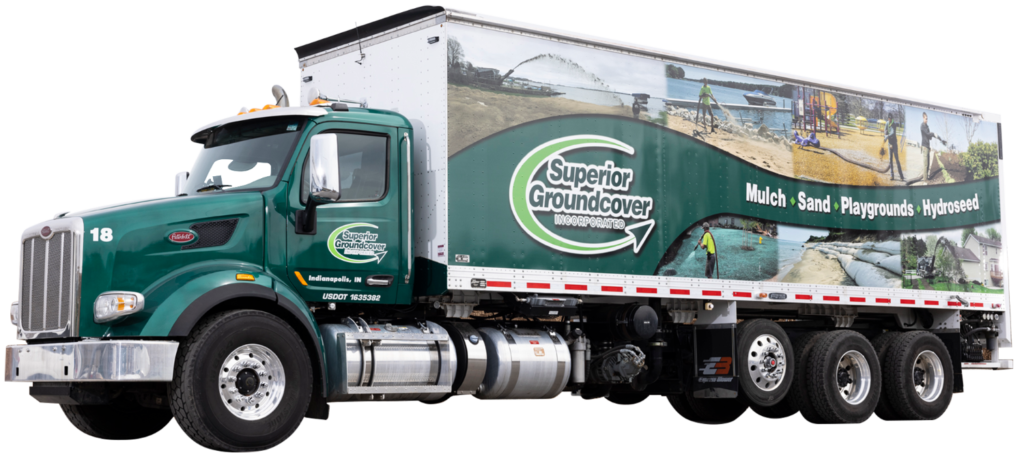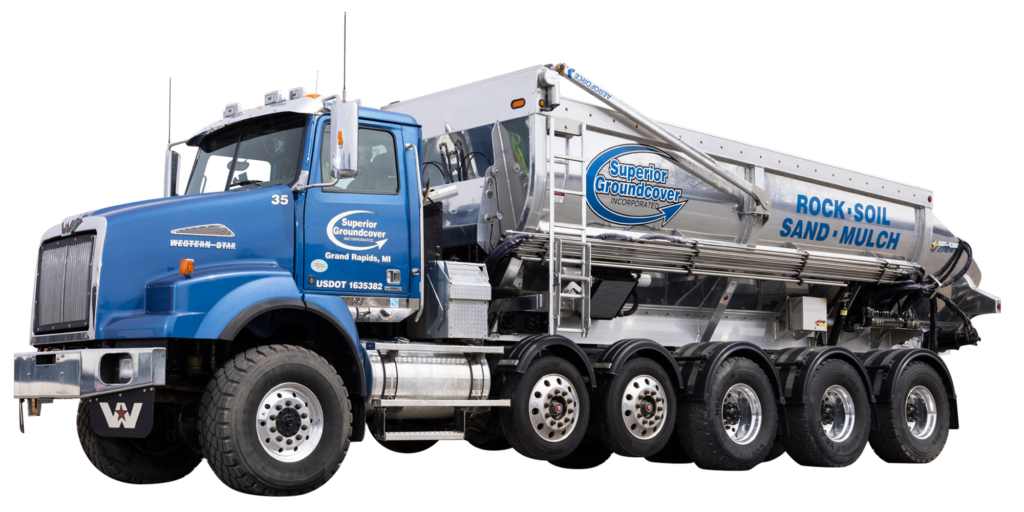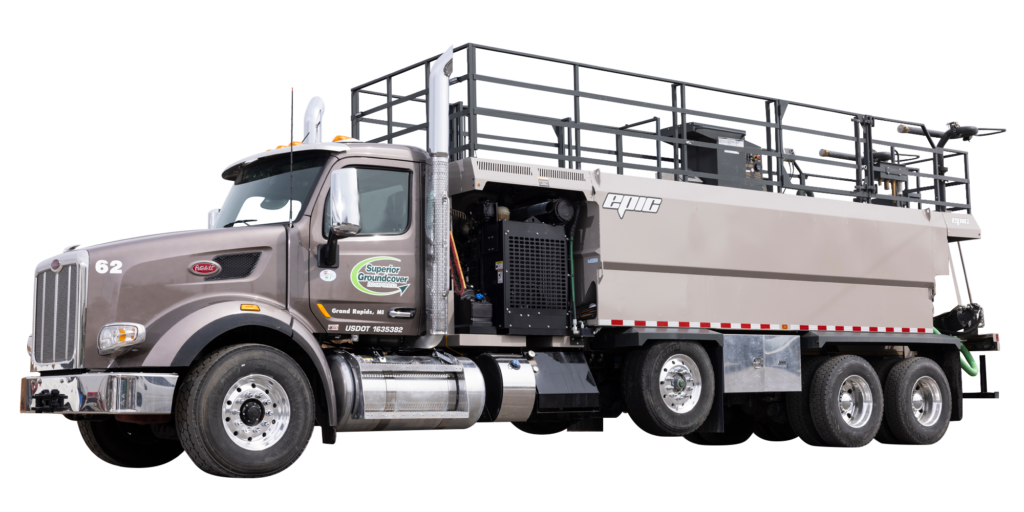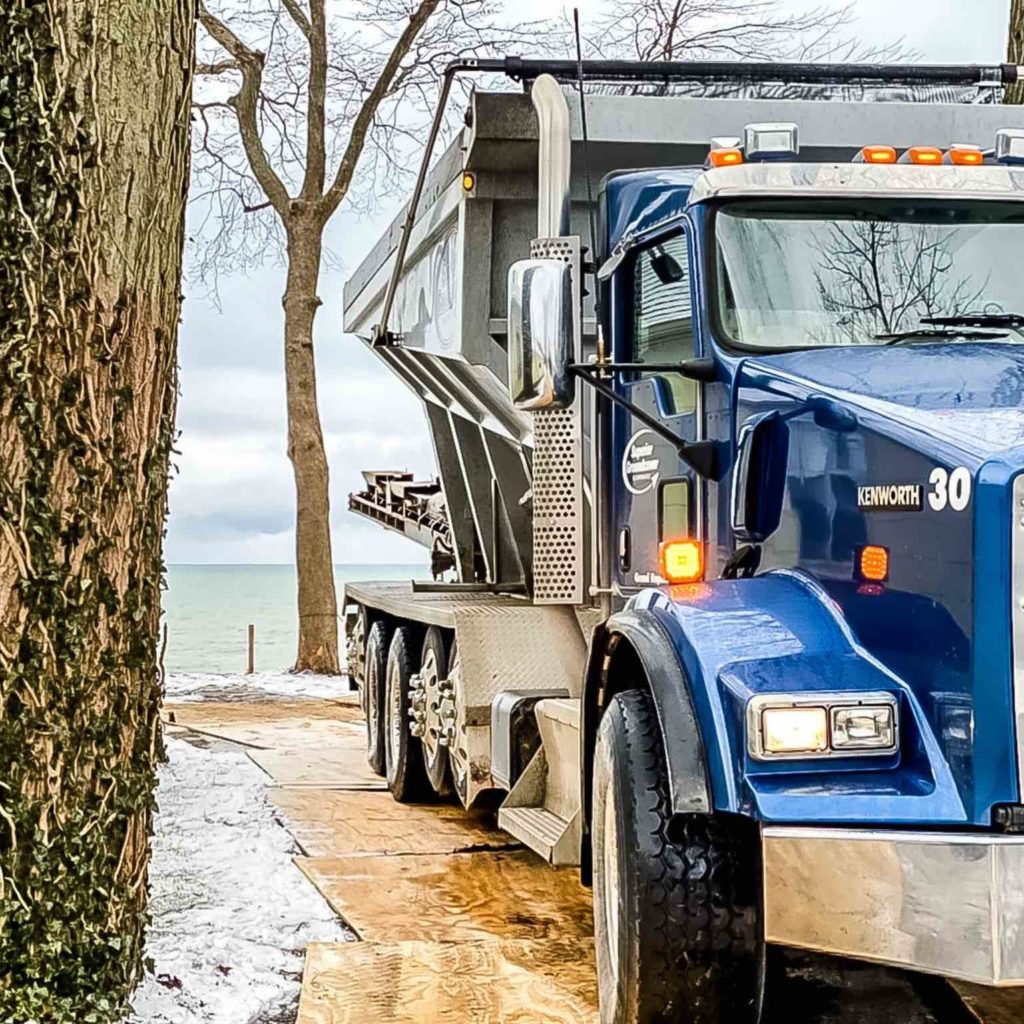

How do I repair shoreline erosion by my home?
While there are some methods of shoreline restoration that can help repair shoreline erosion, prevention is always the best approach. Preventing shoreline erosion from affecting your property is much easier and more affordable than repairing it.
If you are planning to build near a shoreline keep the following in mind:
- Make sure to keep your structures at least 100-200 feet away from the shoreline. (This is a conservative estimate, with water levels continuing to rise, you may want to stay even further away.)
- Do not remove natural vegetation or rock along the shoreline. The root systems of natural vegetation help hold soil in place and prevent erosion from happening.
If you are currently facing a shoreline erosion emergency, there are ways to repair shoreline erosion and protect your property.
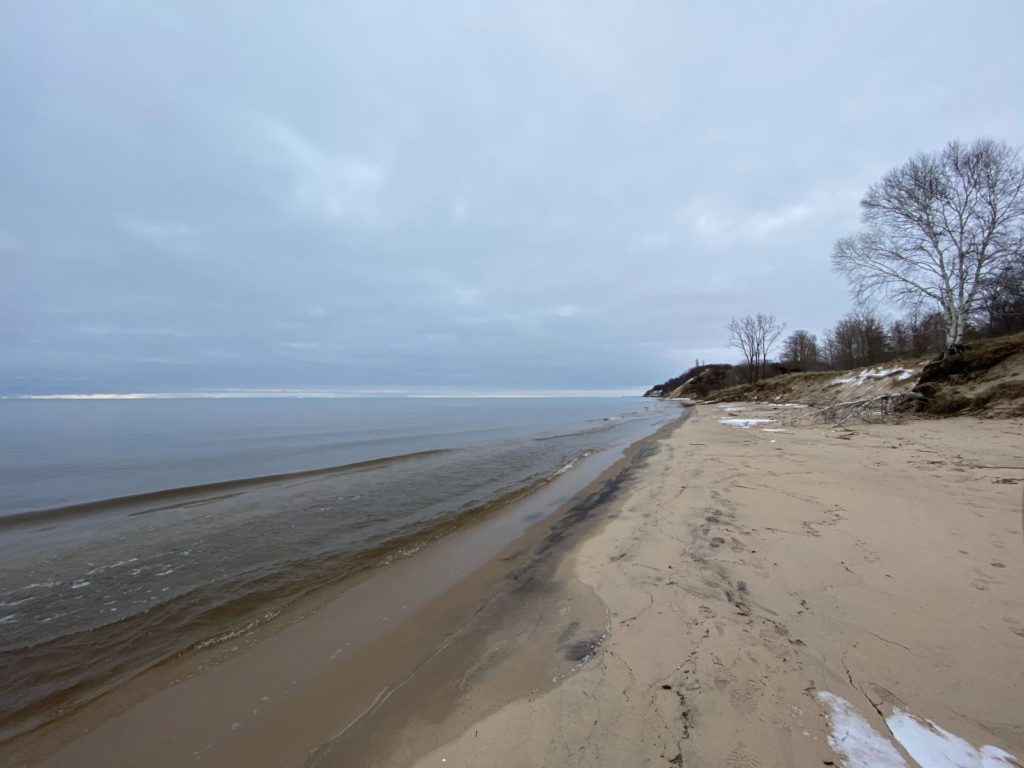

What are useful erosion control solutions?
Erosion is unfortunately not an easy problem to solve. There are many causes and methods of combating it — but choose wrong and you might end up worse off than you started. Here are some methods of shoreline restoration and erosion control for property owners on inland lakes and the Great Lakes.
Great Lakes – Erosion Control Solutions
Metal Seawalls
Seawalls are any type of hard “wall” structure, typically made of concrete or stone, installed along the shore to redirect wave energy and prevent the full force of waves from hitting the shore and causing natural erosion.
Although Superior does not build or install metal seawalls, we do team up with contractors who do. Our sand blower trucks and conveyor trucks allow us to easily supply the sand and backfill material needed when these seawalls are installed.
Check out our latest seawall collaboration with Harbor Hawk.
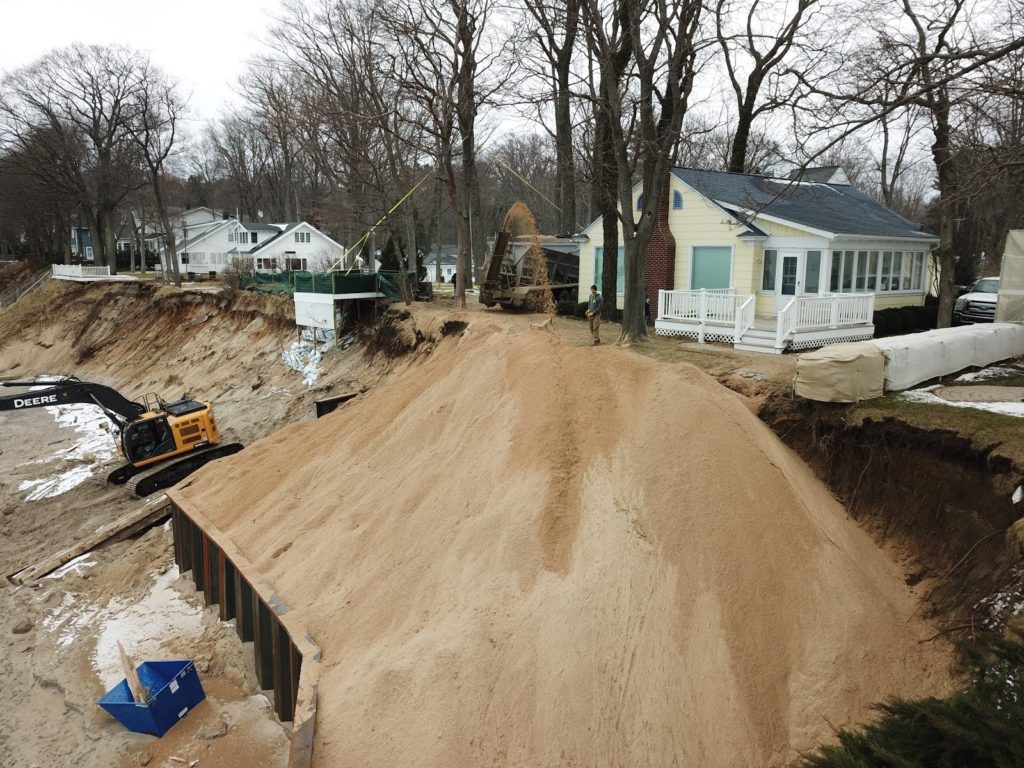

TrapBag & Barrier Force Sandbags
These types of sandbags help in emergency erosion control situations like those currently occurring along the Great Lakes. They are rather quick to deploy, and are a good temporary solution until a steel seawall or rock revetment can be installed.
Superior chooses not to install these types of sandbags, but we do team up with contractors who do!
Superior Groundcover is able to supply sand and fill these types of sandbags quickly using our sand blower trucks.
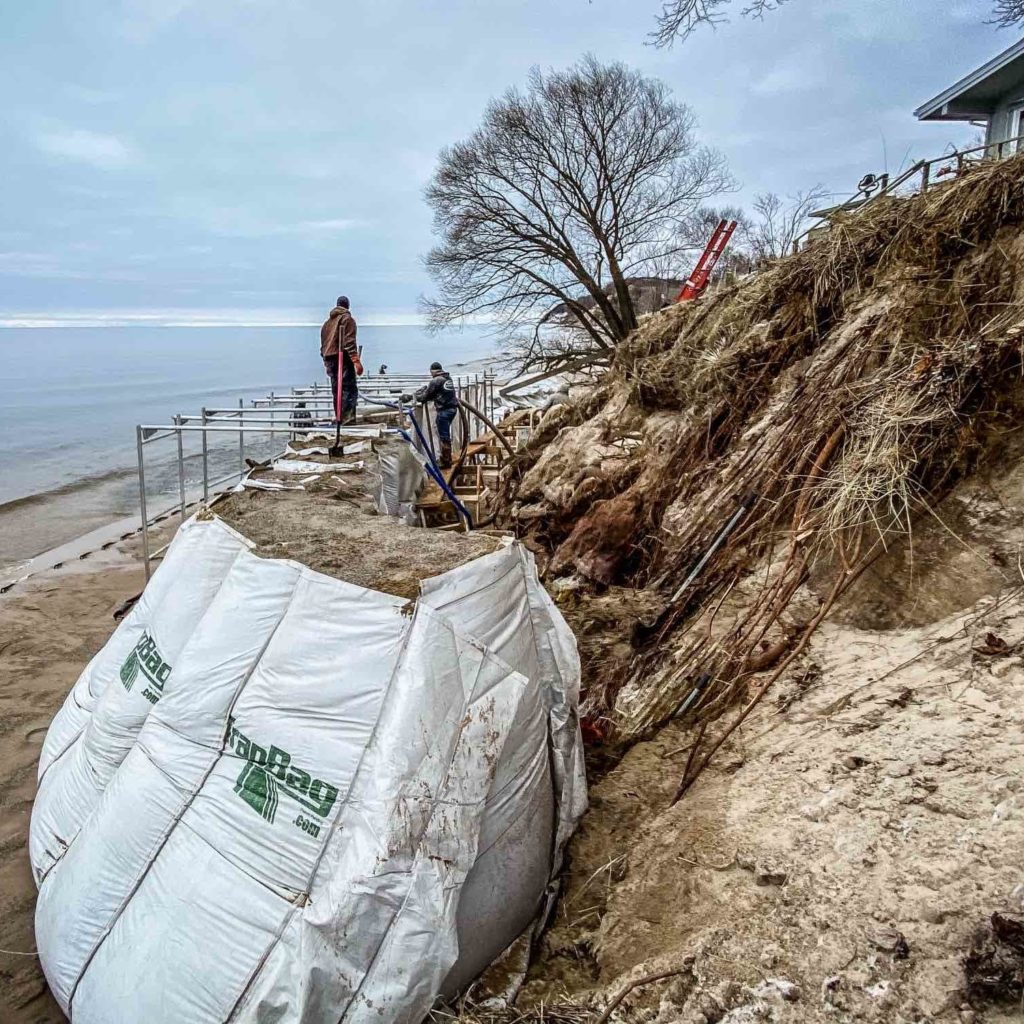

Woven Geotextile Sandbags & Tubes
Geotextile sandbags and tubes can be used as a barrier to reduce wave erosion. These products are made from a strong, eco-friendly woven fabric, are usually filled with a combination of sand and water, and can help protect shorelines and rebuild beaches.
Geotextile sandbags and tubes are a cost effective and durable solution. These products are normally viewed as a temporary measure, but are proven to last and perform well. They can be quickly installed to create revetments and breakwaters, protecting existing seawalls and sand dunes. Geotextile sandbags and tubes work by reducing a wave’s energy before it hits the shore, which slows erosion.
Superior Groundcover is able to supply and fill geotextile sandbags and tubes using our sand blower trucks.


Rip Rap & Rock Revetments
Rip Rap is large native rock, or sometimes recycled crushed concrete, which is used to help prevent shoreline erosion. Rip rap can be pricey, but it’s a great long-term solution and is environmentally friendly.
Rock revetment is a natural way of absorbing some of the impact from the water and large waves that come crashing to the shore. Revetments are structures made up of large, varying sized rocks and stone that are formed near the shoreline to help prevent erosion and shoreline loss.
Rip Rap and Rock Revetments can be used to create seawalls that are better able to absorb wave energy.
Superior Groundcover is able to supply, deliver, and install sand needed during the construction of seawalls using our sand blower trucks and stone slinger trucks.
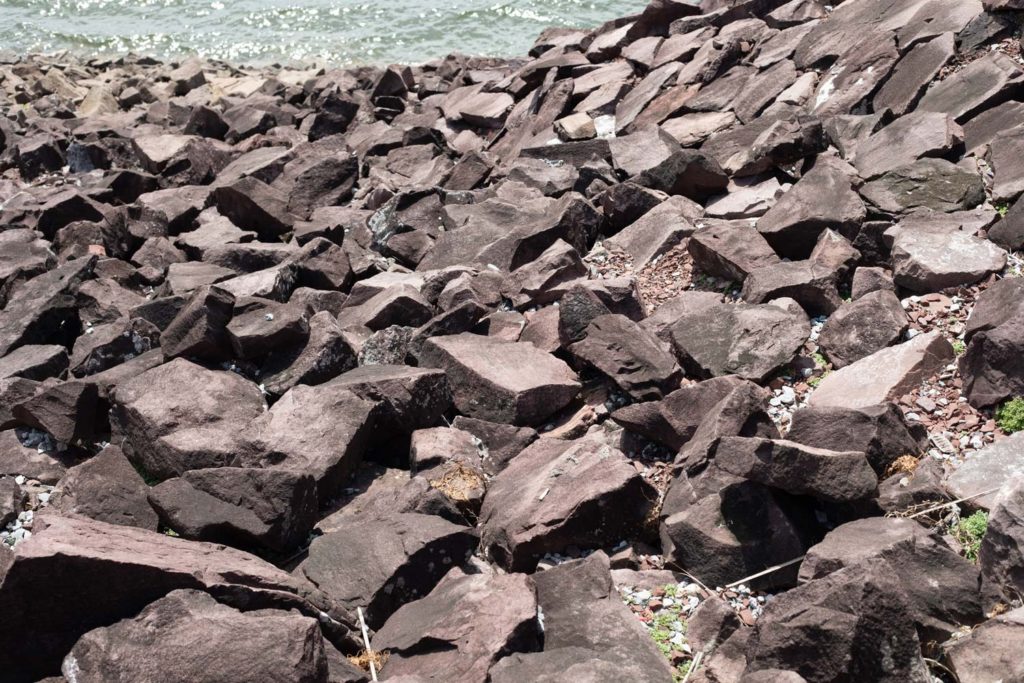

How do I prevent erosion from getting worse?
Lakeshore erosion can be a very frightening, dangerous, and expensive issue for homeowners living along Lake Michigan and other Great Lakes.
Lakeshore erosion happens because of natural forces (both aquatic and terrestrial) as well as human influences. These human influences are often misguided attempts at erosion control which end up making the situation worse for homeowners and the environment.
We have a comprehensive article on Shoreline Erosion if you want to learn more about some of the causes of shoreline erosion.
The best ways to prevent lakeshore erosion are the natural methods. Natural vegetation creates root systems, which help prevent shoreline erosion by keeping sand/soil in place. Removing native plants will cause shoreline erosion to worsen. If vegetation has been removed, replanting the appropriate plants, such as dune grass, is a great solution to help with stabilization.
Another highly effective method is Rip Rap natural rock. Natural rocks along the lakeshore help absorb wave energy rather than redirecting the wave energy which can cause the situation to worsen.
Since vertical seawalls are at an unnatural angle, they are unable to absorb wave energy like sloped solutions.
If you already have a vertical seawall, there are ways to reduce its impact on the environment while also fortifying it against continued erosion:
- As parts of the seawall fail, replace them with natural rock and vegetation.
- Install rip rap in front of the seawall to absorb wave energy and create a more natural slope. The natural slope will help animals move between land and water. It also helps create a thriving ecosystem that can grow.
- Add vegetation to any rip rap.
- Use native plant life in your landscaping and try to stay away from unnatural lawns.
These simple changes can improve the effectiveness of your seawall, and reduce the negative environmental impact which can cause erosion in your area to worsen.
Inland Lakes & Streams – Erosion Control Solutions
Compost Filter Socks and Natural Vegetation
We can help you repair stream banks and shorelines the natural way. Our shoreline erosion control system uses compost filter socks, which are organic, vegetated, quickly installed, and require no heavy equipment or excavation for installation. This system allows vegetation to grow from the inside out to create a natural anchor between the bank and the stabilization system. This system is also completely customizable, and many vegetation options are available.
A very effective (and natural) method of landscaping erosion control is the use of cover plants. The removal of natural vegetation usually leads to landscape and shoreline erosion because bare soil can be displaced much more easily than soil that’s held in place by strong root systems.
Some of the best plants for bank stabilization are native grass, and other grass varieties like vetch, wheatgrass, or rye. These plants have root systems that help keep soil in place. Thankfully, these pants are not only great for preventing erosion, but pretty beautiful!
You can also plant trees for bank stabilization. Tree root systems are very effective at holding soil in place. When looking for the right vegetation to add to your property, make sure to do your research. Plant cover is natural, and fairly inexpensive, making it a great soil erosion solution.
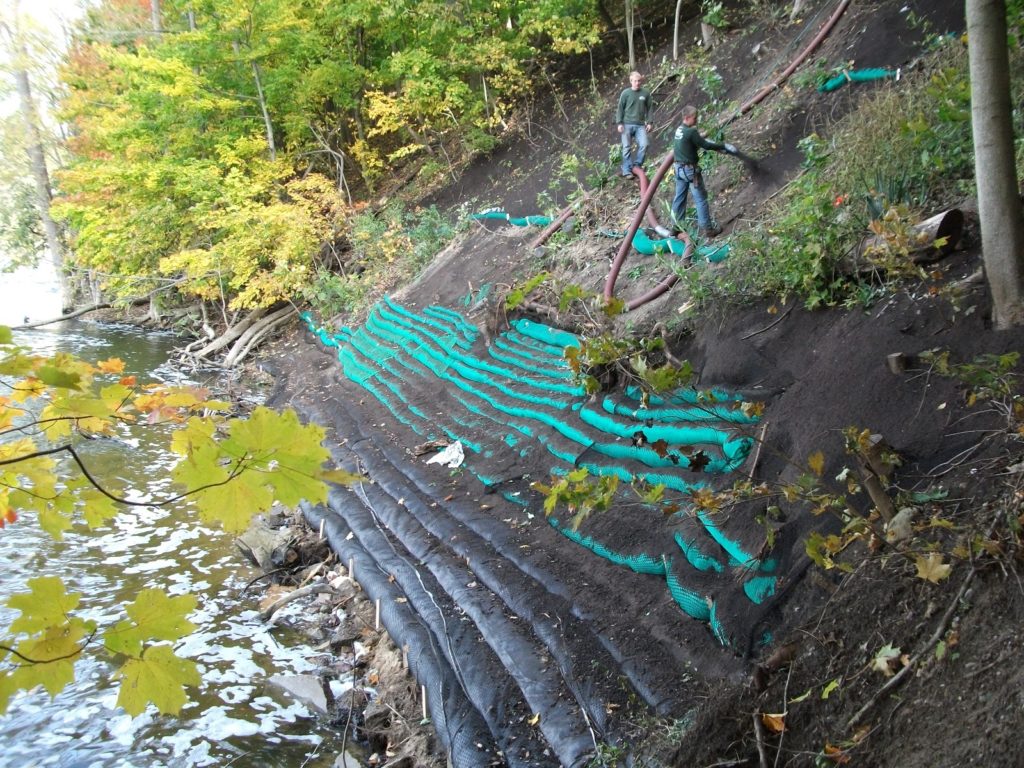

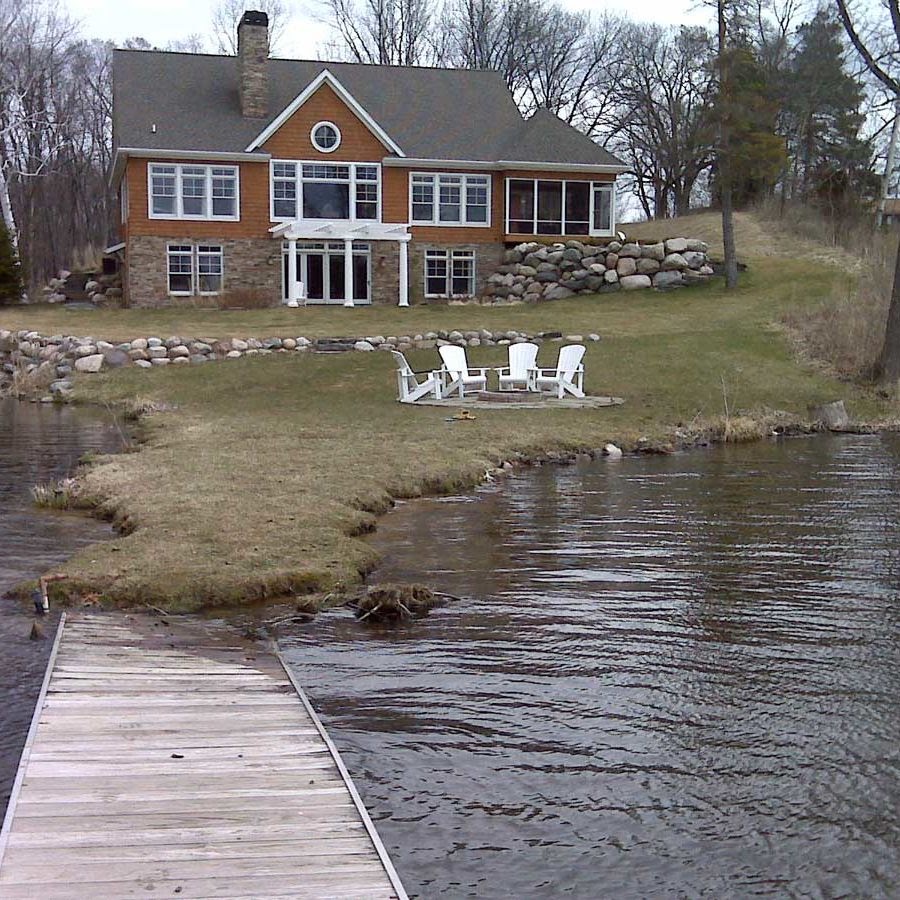

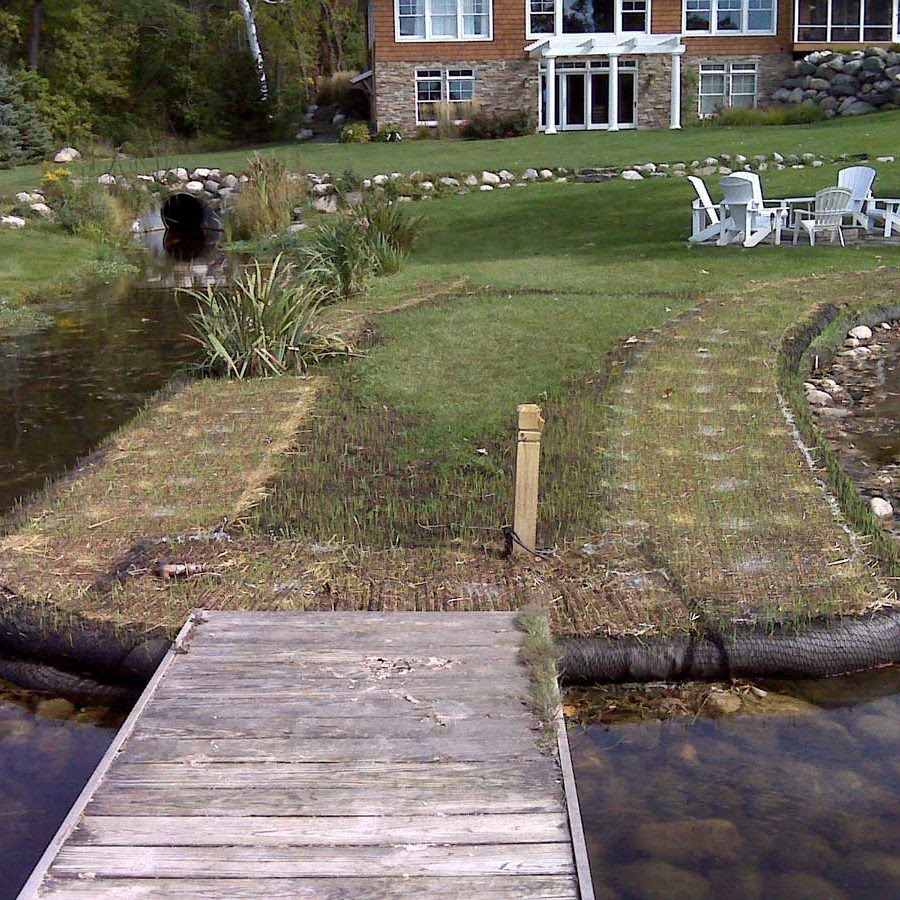
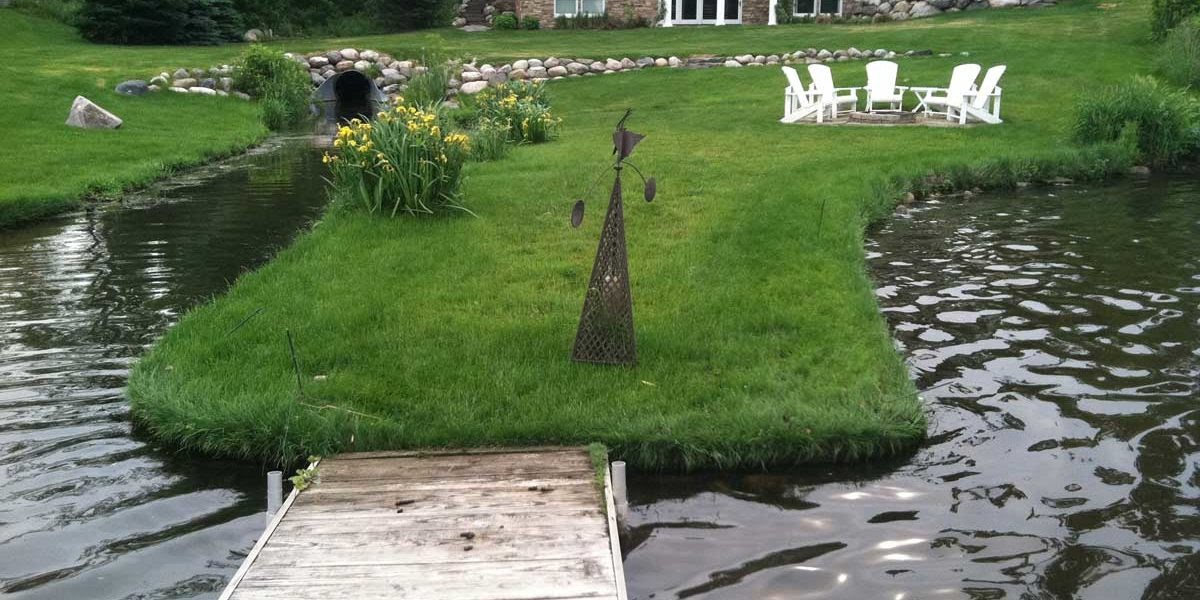

Bio-engineering
Bio-Engineering is essentially mimicking stable shorelines through reintroducing naturally occurring plant life. There are many factors that need to be considered in order to determine if bio-engineering will work for your shoreline. Because of this, it’s best to consult a professional prior to beginning the process.
Keep in mind, bio-engineering does require a permit. You can learn more about this process and the requirements from the Michigan Natural Shoreline Partnership here.
Why are Lake Michigan water levels rising?
Water levels in the Great Lakes in 2019 were the highest they’ve been since 1918. This is evident in our disappearing beaches along the coast. While the lakes have gone from high to low levels throughout the years, there are clear reasons why these swings have become more extreme in recent years.
Our record-breaking water levels can be partially attributed to our record-breaking precipitation throughout 2019 (National Oceanic and Atmospheric Administration) and the beginning of 2020. A warmer atmosphere is able to hold more moisture. This precipitation is caused by climate change and will continue to increase.
“Overall U.S. annual precipitation increased 4% between 1901 and 2015, but the Great Lakes region saw an almost 10% increase over this interval with more of this precipitation coming as unusually large events.” — An Assessment of the Impacts of Climate Change on the Great Lakes.
A recent article in the New York Times points out that this problem is not going away any time soon, “The relentless high water is bound to bring more strife this year even as officials along the Great Lakes continue to promote climate adaptation strategies and resiliency.”
In addition to climate change, human practices in and around the Great Lakes can affect water levels. Dams and rerouting rivers and streams, for example, can add inches to the water levels. While these practices aren’t helping, they aren’t the main culprit.
Climate change is what’s causing more extreme changes in water levels. This includes low levels. High water levels are not the only danger to the Great Lakes region. The real danger is unpredictability. Climate change will continue to cause extreme highs and lows when it comes to water levels, posing threats to homeowners, agriculture, and infrastructure throughout the region.
How do I protect my home from the rising Lake Michigan water levels?
With water levels 3 feet above average, emergency shoreline restoration project permit requests have gone up by 50%, but these emergency methods aren’t the long-term solution. These water levels are going to continue to rise and fall to more extreme levels due to climate change, and are predicted to continue to rise in the coming months.
There are some initiatives working towards pausing human interference thought to contribute to the rising water levels. Dams operating in Ontario, for example, are adding nearly 42,000 gallons of water each second to Lake Superior. These practices, however, are estimated to add only inches to the Lakes’ water levels. In reality, homeowners need water levels to lower by feet.
While water levels continue to rise, homeowners are implementing emergency barriers including seawalls, sandbags, and rock revetments which can help curb damage in the short-term. A long-term solution could be found with proper funding.
The Chicago Sun Times points out “In the past, coastal protections have been piecemeal and often counterproductive. A protective wall erected in one place can result in erosion in another. What’s desperately needed is for the Great Lakes states and federal agencies to work in a coordinated and scientific way to protect land and infrastructure, as well as taxpayers’ wallets. That’s what the Great Lakes Coastal Resiliency Study could do.”
The US Army Corps of Engineers is working on getting this study funded in 2020. “The goal of the Great Lakes Coastal Resiliency study is to develop a programmatic coastal resiliency plan that outlines a collaborative investment strategy for the Great Lakes coasts, while creating a partnership and strong collaboration between the Corps of Engineers, Great Lake states, the Coastal States Organization, National Oceanic and Atmospheric Administration, U.S. Geographical Survey, Federal Emergency Management Agency, and U.S. Environmental Protection Agency. “
In the meantime, homeowners will need to continue to invest in their own shoreline restoration methods such as seawalls, rock revetments, bio-engineering, and relocating, as well as push for more long-term solutions to be put in motion.
Do I need a shoreline protection work permit?
The Michigan Department of Environment Great Lakes and Energy (EGLE) requires permits for any construction along the shoreline. This includes rip rap, seawalls, and bio-engineering. This is because several erosion control methods have major adverse effects on the natural environment. We need to maintain the natural ecosystems along the shoreline in order to avoid making the situation worse.
According to EGLE, “Shoreline hardening that occurs with the construction of vertical walls (seawalls) has significant adverse effects on the fishery, wildlife and the overall water quality of a lake. Where vertical walls are built the gradual transition from shallow water to upland is destroyed, wave reflection off vertical walls causes bottom scour to occur, stirs bottom sediments, increases water turbidity, and impacts spawning areas and aquatic vegetation. Vertical faces block access to and from the water for turtles, frogs, and other fauna that need access to the uplands to feed, rest, and nest. Seawalls damage or destroy these important habitat areas and weaken the ecosystem.
Because of these negative effects of vertical walls EGLE recommends the use of natural shoreline treatments. New shoreline hardening should be avoided where alternate approaches such as plantings and natural stone can be used to protect property from erosion. The purpose and benefits of plantings/stone are to provide a natural transition between the open water and upland, while providing habitat.” Read more on this from EGLE here.
The Michigan Natural Shoreline Partnership explains: “Most activities that occur within or along the shoreline of inland lakes and streams are regulated under Michigan’s Inland Lakes and Streams Act.”
You will also need a permit if you are planning to alter any soil, vegetation, or topography within 500 feet of a lake or stream. The required permit to make these types of changes is a Soil Erosion and Sediment Control Permit and can be found on the State of Michigan site..
You can find other relevant required permits on the State of Michigan site as well.
Michigan has also expedited the permitting process to help homeowners get permission more efficiently. These permits used to take months to process, but are currently being processed in a matter of days due to the extreme circumstances.
What methods of shoreline restoration does Superior Groundcover offer?
Superior Groundcover can support your erosion control strategy by providing sand supply, sand delivery, and sand installation for your project. Our sand blower trucks can blow stone and sand up to 400’ and our stone slinger trucks can convey sand, stone, and soil up to 80’.
We also use Compost Filter Socks for inland lake and stream erosion control – repairing stream banks and shorelines naturally through reestablishing native vegetation.
We also offer erosion control services that support projects such as:
- Vegetation Establishment
- Sediment Control
- Slope Protection
- Stream Bank and Shoreline Stabilization
- Vegetated Retaining Walls
